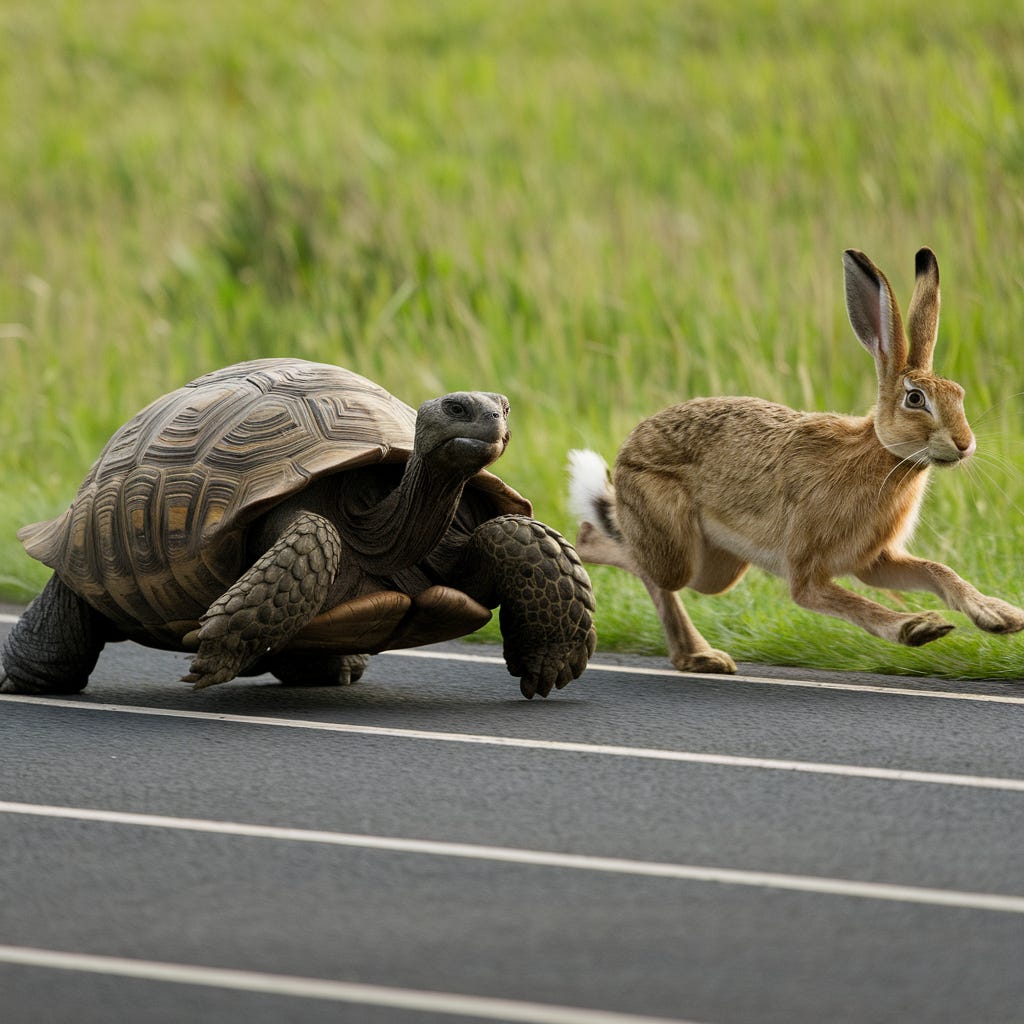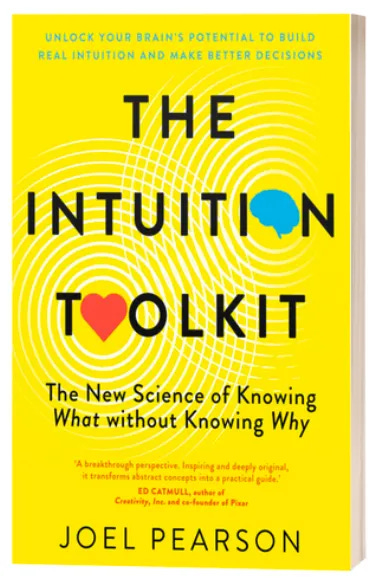The Science Of Grit: Why You Should Be Doing Hard Things For An Easier (And Longer) Life
Inside the connection between tenacious, effortful behaviour and the aMCC.
Hello dear reader,
You might have noticed that recently, I’ve been making more videos about aphantasia and hyperphantasia.
I’m making more and more videos for you— my valued community — to understand and measure your mental imagery in an accessible and digestible way.
However, I wouldn’t say they’re particularly easy or seamless to film. They require a lot of preparation and work, from scripting what I’m going to say and nailing the setting and lighting to editing, adding graphics, and uploading. Plus, I don’t know about you, but nothing feels particularly natural about having a camera in my face!
Making these videos takes me out of my comfort zone and often requires some determination and persistence when things don’t go to plan.
In today’s newsletter, we’re delving into exactly why that’s a good thing — thanks to the connection between grit, and a network in your brain called the anterior mid cingulate cortex (aMCC).
What is grit?
The expression “Grit your teeth and bear it” is thought to date back to the 18th or 19th century. Before the advent of anaesthesia, injured soldiers would have to literally clench their teeth to endure medical procedures.
However, it’s thanks to research from psychologist Angela Duckworth that the concept of grit has been reimagined as not only a physical action but also an adaptive personality trait. The concept really entered the public vernacular when she released her book, Grit, in 2016.
At the heart of the New York Times bestseller is the idea that talent or intelligence is not enough to guarantee success. Defined as the combination of passion and persistence over the long-term, Duckworth argued that grit is the missing piece of the puzzle for those who achieve greatness.
Referencing the age-old fable of the hasty Hare and the slow-and-steady Tortoise, she writes:
“Gritty individuals are tortoise-like, distinguished by their propensity to maintain effort and interest over years despite failure, adversity, and plateaus in progress.”
It makes perfect sense. After all, the path to achieving big goals is rarely straightforward, easy, or quick. Naturally, those who persist even in the face of challenges and obstacles are more likely to eventually reach their destination, compared to those who give up at the first sign of friction.
This perspective on grit frames it as a means to an end — a vehicle for goal acquisition. However, what’s more fascinating is the growing body of research about grit for the sake of grit. In other words, the impact that showing determination and resilience has on your brain, both in the short- and long-term.
Your brain on grit
Imagine you’ve signed up for a half-marathon. You’ve got all the gear, have made your pump-up playlists, and have created your training plan. Then, out of nowhere, your car breaks down. Based on your current financial situation, you’re not going to be able to afford to get it fixed for at least three months. Not only does this hinder your plans of driving to the park for your training runs, but you don't even know how you’re going to get to the race on the day.
Are you the kind of person who decides it’s all too hard and sells your half-marathon ticket, telling yourself there’s always next year? Or, do you suck it up, commit to running to the office every day as your training, and organise a lift to the race with a friend?
If it’s the latter, something rather interesting is happening in your brain. Neuroimaging studies show that those who persist (rather than withdraw) when faced with challenges tend to show greater activity in the anterior mid-portion of the cingulate cortex.
Due to its location at the intersection of multiple important neural networks related to motor planning, interoception (the process of sensing signals from the body i.e., assessing how do I feel?), executive function, and sensory integration, Touroutoglou et al. (2019) argue that the aMCC plays an important role in weighing energy requirements against predicted rewards and allocating resources accordingly.
In other words, when you demonstrate grit in the face of adversity, you’re more likely to say “Okay, the short-term pain is worth the long-term gain” and soldier on.
Think of the ACC like a muscle, the more you do hard things, the more it grows! Yes, there is also evidence that people who do hard things a lot that involve conscious self-control, including meditation, have larger ACCs!
The benefits of grit for your health
Now, this cognitive phenomenon is obviously extremely valuable for achieving your dreams. But, that’s just the tip of the iceberg. There’s some astounding research emerging around the broader health benefits of grit and aMCC activity.
In ‘superagers’ — I know a bad name as it sounds like they are ageing faster! but its actually those who show equal or superior cognitive performance to middle-aged and young people, even in their advanced years — we see differences in the structure and function of the aMCC. Not only do these extraordinary individuals have thicker cortical structures in this region, but they also seem to show greater intrinsic functional connectivity between aMCC and major nodes of the salience.
While it could be argued that these superagers are more tenacious so they’re more likely to try harder on cognitive tests, the ‘use it or lose it’ model of neuroplasticity suggests they’ll stay sharp well into their golden years.
Other benefits of aMCC activity include better weight loss outcomes, greater athletic performance, academic achievement, and professional success.
How to reverse-engineer grit in your life
The good news is, life is inherently challenging and you’ll never have to look too far for obstacles to overcome! That said, if you’re looking to intentionally harness the brain-boosting benefits of tenacity, there are plenty of practical ways you can get out of your comfort zone.
Find new ways to challenge yourself at work, whether it’s putting your hand up to lead a new project, or accepting an opportunity to give a keynote presentation. Remember the golden rule of the challenge-skills balance — a task should be 4% more challenging than our current abilities to get into the flow state.
Equally, seek out opportunities to become a beginner at something outside of work. It could be boxing, skiing, or playing an instrument. Research shows the aMCC is activated by emotions (including negative ones), so the more it sucks at first— the better.
Try rejection therapy. In some people, the feeling of being excluded or ostracised can be similar in intensity to physical pain. However, it can’t actually hurt us — so why not seek out opportunities with the potential for rejection, such as asking someone out or requesting something for free?
Seek out physiologically uncomfortable (but still safe) sensations, such as sitting in a traditional sauna, dunking in an ice bath or fasting.
Exercise and meditate. Both of these habits have been found to increase aMCC activity over time. Plus, they can feel like a chore at times — which is precisely why it’s great to push through and do them anyway.
Yes, these things may feel uncomfortable and even painful to begin with. But, if you’re willing to do these hard things, you’ll be well on your way to an easier and more enjoyable life.
Mental meanderings
Do you consider yourself a person with ‘grit’?
In what areas of your life could you push yourself more out of your comfort zone?
What are some hard things you do for an easier life?
Let us know in the comments below!









I wonder if you still get the positive benefits if you did not choose the hardship.
Thanks for another great article and the work you are doing on the videos. The effort is appreciated.
In my line of work (recruiting) I see the difference and impact of people who have capability but not grit all the time and look for signs of persistence as part of the selection process. Now I know why so many if these people also are active and look and sound young for their age
Not sure if you have also made the connection but it seems to me like Grit is tied to the background processes and different kind of connections aphants make and use that give us the ability to mimick visualizers